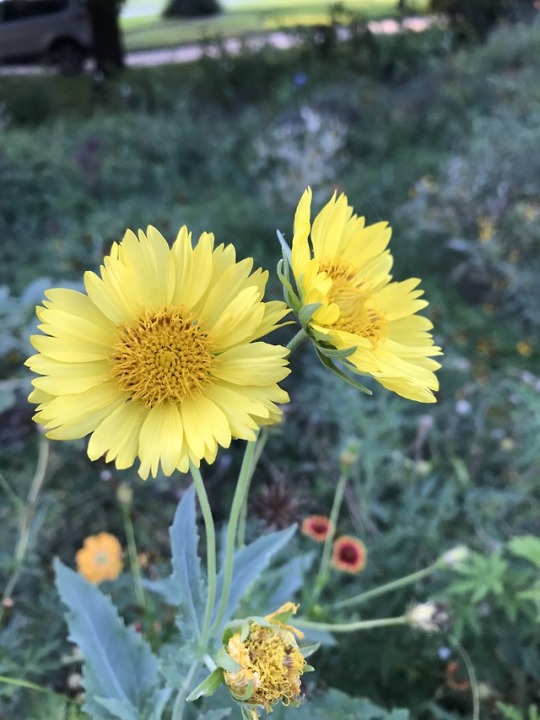#cowpen daisy
Photo
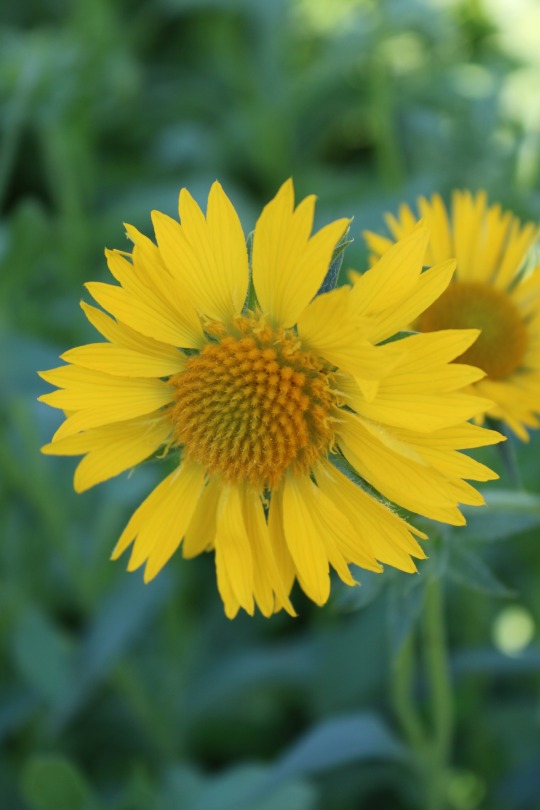
Golden Crownbeard (Verbesina Encelloides)
Toulouse, France
#photographers on tumblr#nature#flowers#yellow#floral#summer#flores#verano#amarillo#golden crownbeard#verbesina encelloides#gold weed#wild sunflower#vertical#original photographers#original photography#cowpen daisy#butter daisy#crown beard#american dogweed#south african daisy
164 notes
·
View notes
Text
4 August 2023 - Field Notes Friday
I was kinda sort of doing this a bit earlier and I don't want to make it too formal, but this series is more of a way for me to share my time out on the prairie and synthesize the knowledge I pickup so I can try to remember at least some of it. I learn somethin' new every day.

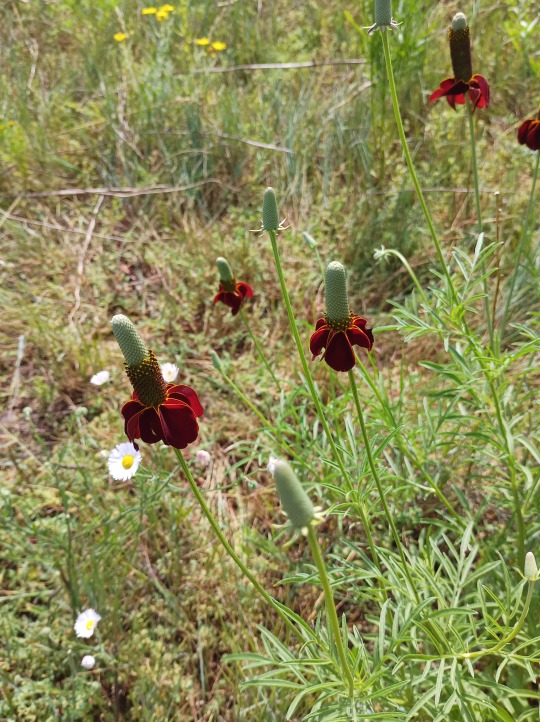


Spent a lot of time walking around in the flowers and a lot of time with small creatures this week.
Asteraceae
The sunflowers, prairie coneflower, fetid marigold, and the gone to seed cowpen daisy with the bumblebee on it are all members of the family Asteraceae. This family of plants is one of the largest plant families on the planet estimated to be over 20,000 species.
Asters are composite flowers, meaning the flower head isn't just one flower but many. The large outer petals you see on asters are known as ray flowers (like the large yellow flowers you see on a sunflower). Often, but not always, ray flowers don't have any reproductive structures. The capitulum, the head of the plant, (like the brown section in the middle of a sunflower) is actually composed of hundreds of tiny flowers called disc flowers. These are the flowers that actually get pollinated and produce seeds.
Sunflowers, lettuce, endive, safflower, echinacea, dandelions, and thistles are all members of the Aster family. Often in the field they're sometimes referred to as DYC (damn yellow composites). Because there are so many of them and they're hard to id, even for folks with years of botany or biology under their belt.
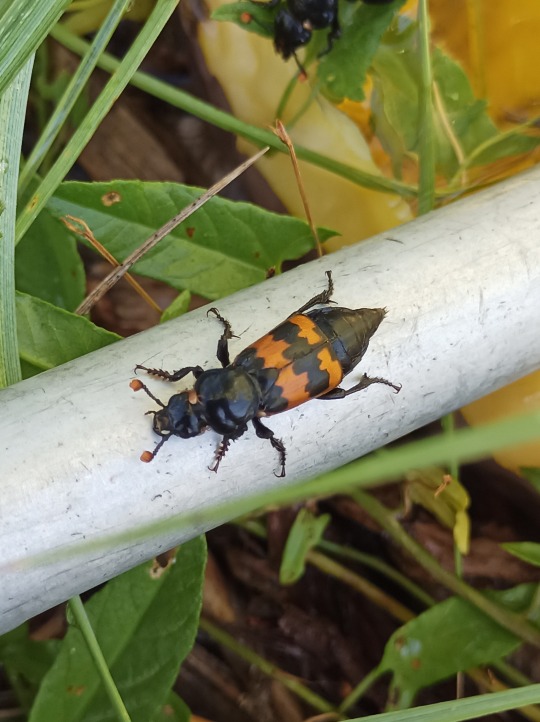

Margined Burying Beetle & Funnel Spider
Margined Burying Beetles are a type of carrion beetle and have very distinctive Halloween colors, which I appreciate! I accidentally flooded a bunch of them out when I was watering some trees. Not very cool of me, but it was neat getting to observe them.
Male beetles fly around looking for the carcass of small vertebrates in order to bury them underground in a little house and attract a potential mate. Once a female does show up though, it's not unusual for other beetles to have arrived as well. If that's the case then they all have to duke it out to see who gets to stay, typically the largest male and female win and the losers have to go look elsewhere. The male and female beetles will mate, clean up the carcass of any fur and feathers, and the female will lay her eggs. Burying beetles engage in parental care and one, sometimes both, will watch after the young until they pupate and are able to take care of themselves. Parents will basically feed the larvae vomit until the young can feed on their own.
These beetles can also secrete enzymes that can actually mask the scent of carrion to reduce the chance of other critters trying to munch on it. Which is pretty wild, considering how much dead stuff smells sometimes. Also, if you can see in the picture that beetle has a beige dot on its head. The beetle had a bunch of mites hanging out on it on the underside! I thought they were parasites at first, but did some research and turns out it's a symbiotic relationship. The mites hitch rides to carcasses and like to eat fly larva. Free rides for the mites and reduced competition for the beetle, win-win.
I fed the funnel spider a grasshopper. She was probably happy to get breakfast, lunch, and dinner for the week.


Peace or War?
Couple of mice got stuck in this trash can. Don't know how long they'd been in there, but one of them was very agro. They did not like the mouse with the stubby tail and actually drew blood trying to bite the rest of it off. It was like watching a mini cage wrestling match while I was looking for a place to release them. They all made it out of the trash can, but I can't say what happens after...

Found this beautiful patch of prairie coneflower and spreading fleabane. Got distracted by them and all the bugs.
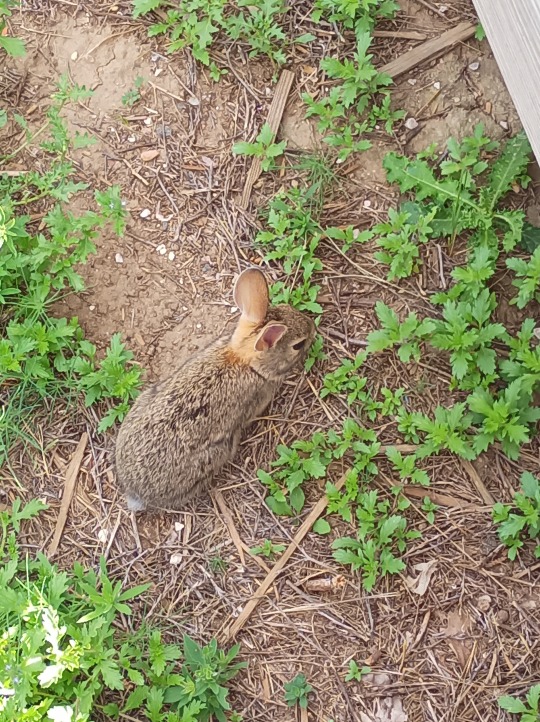

Young cottontail rabbit and barn swallow eggs. Mom's been sitting on them diligently, so hopefully they'll hatch soon.
#nature#prairie#little ghost on the prairie#field notes friday#asteraceae#prairie coneflower#sunflowers#fetid marigold#cowpen daisy#insects#margined burying beetle#funnel spider#cottontail rabbit#barn swallows#spreading fleabane#mice
5 notes
·
View notes
Text

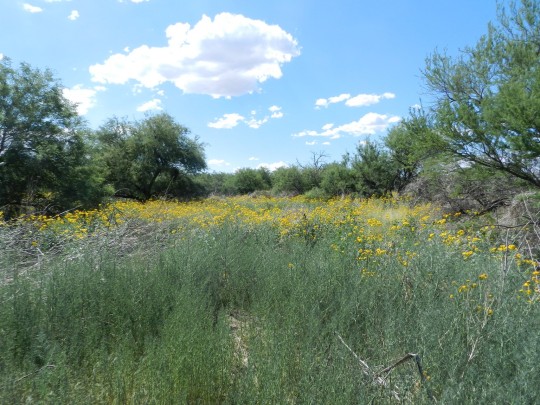
Cowpen Daisies - May 2023
Golden crownbeard, also known as cowpen daisy and officially as verbesina encelioides a a very hardy desert plant that blooms in mid to late May. There were isolated cowpen daisies all over the park, but on the road to the camping areas was a large field of them. Image one is a closeup of one of the blossoms. Image two is the whole field.
MWM
#arizona#tucson az#oro valley az#catalina mountains#catalina state park#golden crownbeard#cowpen daisy#verbesina encelioides
0 notes
Text
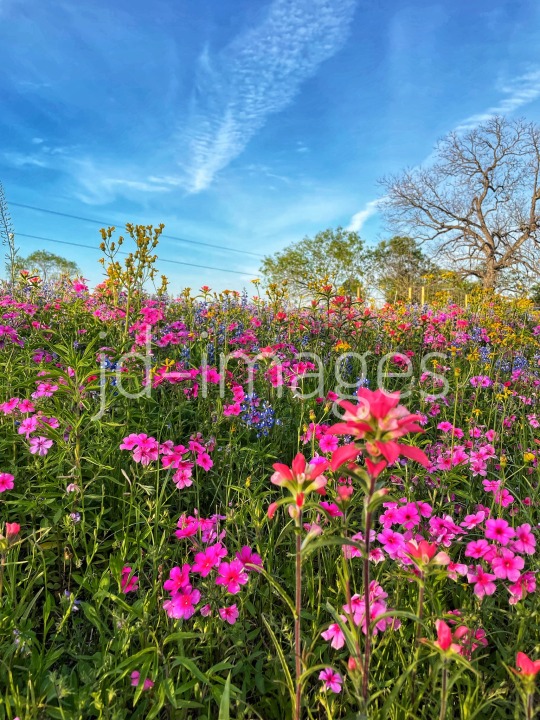
Happy Spring!
#jd johndeacon or jackdaniels#jd chats#rambles#ramblings#my photgraphy#spring flowers#i love spring#texas wildflowers#wildflowers#spring equinox#happy spring#bluebonnets#phlox#paintbrushes#cowpen daisies#jd images
3 notes
·
View notes
Photo

Past Photo Favorites - Golden Crownbeard Flowers cover this field in yellow. This happens every year during the monsoons in August and into September. It is magical sight! FYI, Golden Crownbeard Flowers are also called Cowpen Daisies (if it were up to me I would take a bit from each name and call them Golden Daisies. #PastPhotoFavorites #GoldenCrownbeards #CowpenDaisies #FieldOfYellow #SummerInNewMexico #Memories #SangreDeCristoMountains #AguaFriaNM #Naturalist #PhotoByJeriRae (at Agua Fria, New Mexico) https://www.instagram.com/p/CovKtWpvfxQ/?igshid=NGJjMDIxMWI=
#pastphotofavorites#goldencrownbeards#cowpendaisies#fieldofyellow#summerinnewmexico#memories#sangredecristomountains#aguafrianm#naturalist#photobyjerirae
0 notes
Text
This packet is filled with native cowpen daisy (Verbesina encelioides) seeds.
Sprinkle them anywhere you think could use a little more beauty. You’ll be feeding the bees and birds, too.
0 notes
Photo
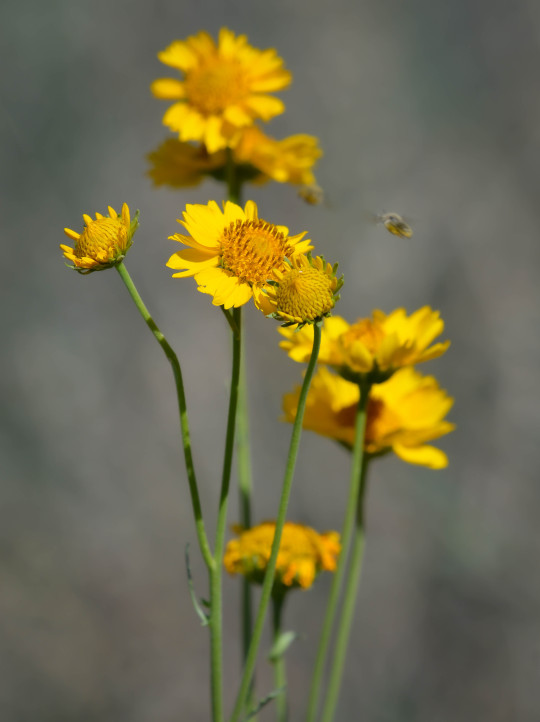
Cowpen daisy (Verbesina encelioides) at San Pedro House.
#photographers on tumblr#cowpen daisy#Verbesina encelioides#San Pedro House#San Pedro Riparian National Conservation Area#Cochise County#Arizona
131 notes
·
View notes
Text
Cowpen Daisy Art -- A Solo Gift
Cowpen Daisy Art — A Solo Gift
Cowpen Daisy — Photo-Artistry by kenne
Last Thursday (May 5, 2021), I posted a photo of the lone wildflower (Cowpen Daisy) on a trail along the TanqueVerde Wash between Sabino Canyon Road and Craycroft Road. Our community, Tanuri Ridge, is located north of thewash, where I sometimes walk over four miles up and back along the wash. This is an art piece from the photo.
A good friend commented on…

View On WordPress
#Cowpen Daisy#Craycroft Road#Photo-Artistry#Sabino Canyon Road#Tanque Verde Wash#Tanuri Ridge#Tucson Arizona
2 notes
·
View notes
Photo

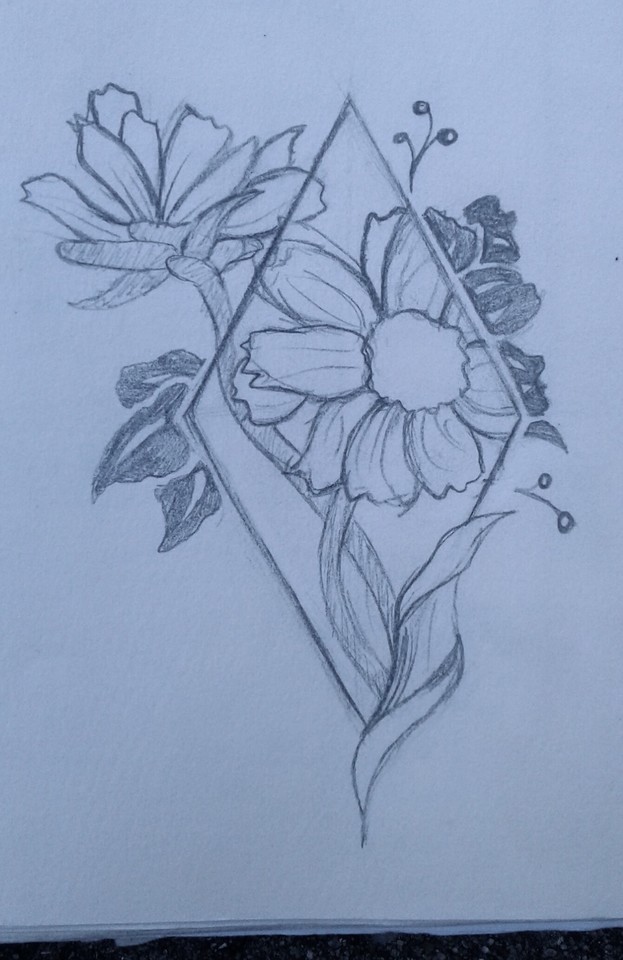
Guess who’s designing tattoos again!!
#altart#sketches#tattoos#tattoo ideas#maybekatie#haven't even gotten my first tattoo and I'm already designing my second one lol#This flower is based on the Cowpen Daisy btw! they're native round here and they grow in the side of the road in the spring!#also I know that this blog has been way too dead for way too long#but I promise I have several projects in the works right now#I just have to finish them
1 note
·
View note
Photo
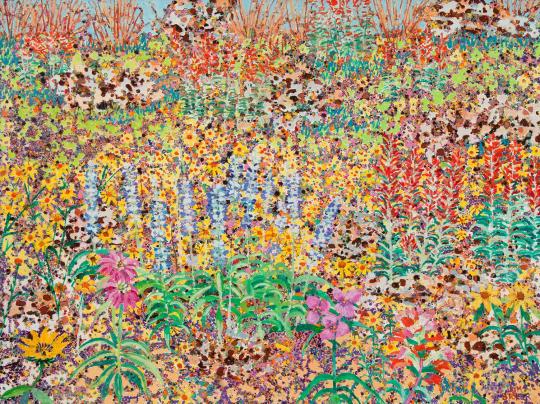
Jim Stoker
Mealy Blue Sage, Cowpen Daisies and Friends, 2015
Oil on linen
59 notes
·
View notes
Photo
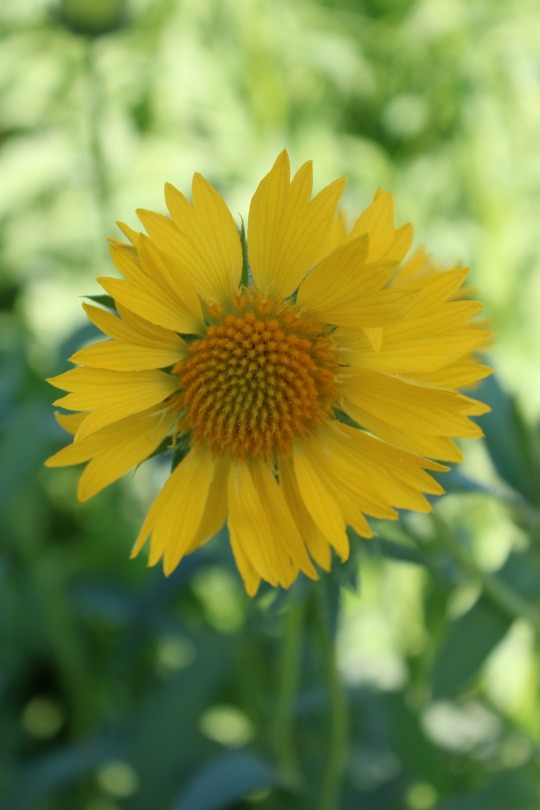
Golden Crownbeard (Verbesina Encelloides)
Toulouse, France
#photographers on tumblr#nature#flowers#yellow#floral#summer#flores#amarillo#verano#golden crownbeard#verbesina encelloides#gold weed#wild sunflower#vertical#original photographers#original photography#cowpen daisy#butter daisy#crown beard#american dogweed#south african daisy
168 notes
·
View notes
Text
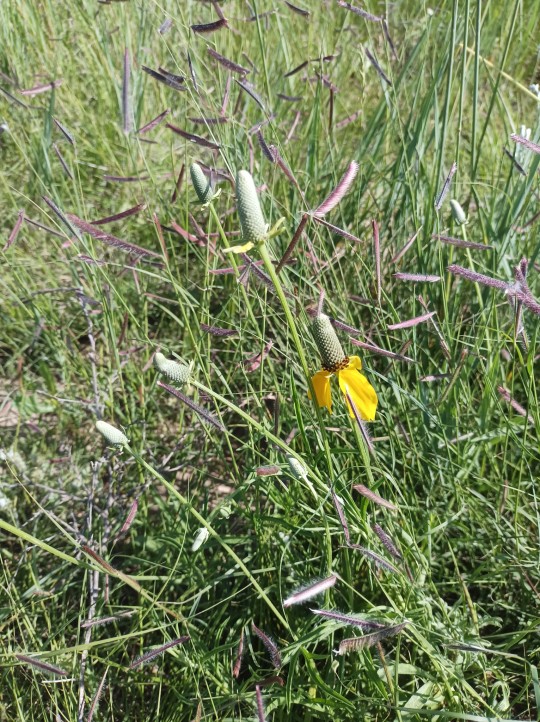


Small sampling of native prairie plants spotted during a workday: Prairie coneflower with blue grama grass, cowpen daisies, and a wavy-leaf thistle.


The afternoon storms are always magnificent to watch roll in.
And this week's roadkill below the cut:


Porcupine and what I think is a very smooshed Woodhouse's toad.
#nature#my photos#little ghost on the prairie#cw: dead animals#wavy leaf thistle#cowpen daisy#prairie coneflower#blue grama grass#porcupine#woodhouse's toad#short grass prairie
3 notes
·
View notes
Text
#1756 - Verbesina encelioides - Golden Crownbeard

AKA Cowpen Daisy, American dogweed, butter daisy, gold weed, skunk daisy, South African daisy, wild sunflower, and yellowtop
Australia has plenty of native Asteraceae, but the family is so hugely successful that of course it will have to include numerous weed species. For most of November I was busily involved in the 2020 Biosecurity Blitz, where citizen scientists in Australia report on any suspected invasive species they spot - this annual was one of them.
Originally native to the SW of North America, and down to central Mexico. Now an extremely widespread weed, absolutely thriving where the soil has been disturbed. Roadworks and building sites are certainly covered by the stuff here in Perth. Poisonous to livestock, and poisons the plants around it by secreting allelchemicals into the soil.
1 note
·
View note
Text
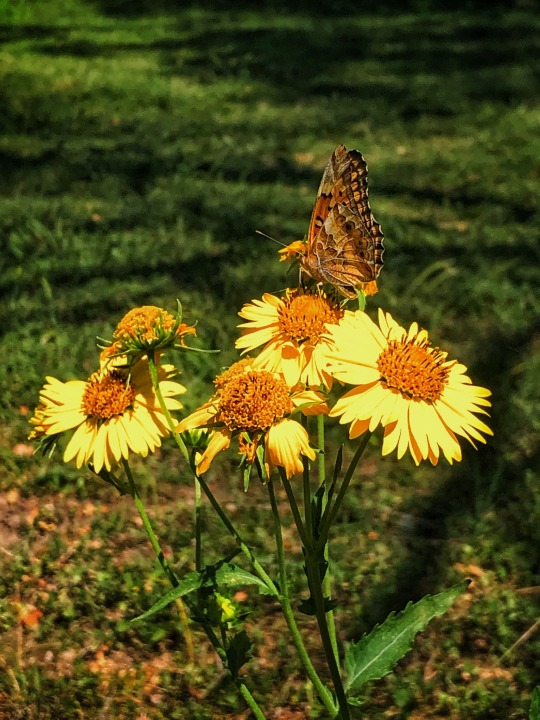
Good Evening! Busy day here, hope y’all had a good one!
#not in my garden#nature#butterfly#cowpen daisies#fall#get outside#busy day#jd chats#jd johndeacon or jackdaniels#ramblings#rambles
7 notes
·
View notes
Photo
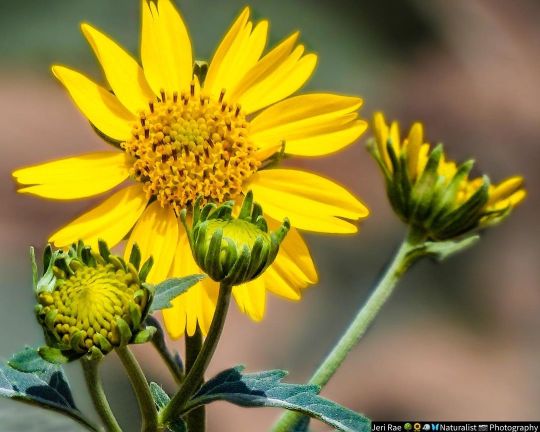
Golden Crownbeard Flowers (Verbesina encelioides) growing in an are where the roadside flora had been cut down 3 or so weeks ago. More about this flowering plant: “[Golden Crownbeard] (Verbesina encelioides) is a flowering plant in the family Asteraceae. The species is native to many parts of the United States and Mexico. It is naturalized in other parts of North America, the Middle East, Spain, Argentina, Australia and the Pacific islands. Common names include golden crownbeard, gold weed, wild sunflower, cowpen daisy, butter daisy, crown-beard, American dogweed and South African daisy. The species responds strongly to disturbances on suitable sites and retards the development of other local species. Research has identified an allelopathic effect on radishes which may explain its ability to dominate other species in some locations.” - Wikipedia #ScenesFromMyWalk #GoldenCrownbeard #GoldenCrownbeardFlower #VerbesinaEncelioides #CowpenDaisy #ButterDaisy #GoldWeed #WildSunflower #SunnyPlant (at Agua Fria, New Mexico) https://www.instagram.com/p/CnAjC-9v762/?igshid=NGJjMDIxMWI=
#scenesfrommywalk#goldencrownbeard#goldencrownbeardflower#verbesinaencelioides#cowpendaisy#butterdaisy#goldweed#wildsunflower#sunnyplant
0 notes
